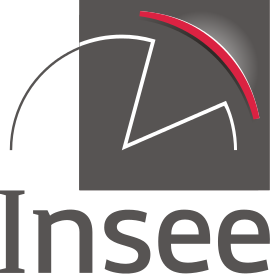Expenditure and revenue of general government in 2023 National accounts - 2020 Base

Expenditure and revenue of general government present in a simplified way the national accounts of general government. They register almost only the actual monetary flows and exclude most of the imputed flows of the national accounts.

Due to reporting and unit errors in the ratios, table 3.215 was corrected on 12 September 2024. The amounts of expenditure and revenue are unchanged.
Pour comprendre
General government expenditures and revenues
General government expenditures and revenues show in a simplified way general government national accounts. They intend to come closer to actual monetary flows by removing most of the imputed flows of national accounting. For example, almost all the non-market output (P13) presented in the complete tables of national accounting result from imputations of output which do not correspond to a monetary flow. In the expenditures and revenues tables, these outputs are removed.
These tables of general government expenditures and revenues allow a quantification of changes in real flows. Since the removal of imputed flows affect in the same way resources and uses, the balance of these tables is strictly equal to the lending/borrowing (B9NF) in the meaning of institutional sector national accounts, for the general government sector.
According to the recommendations of the European system of accounts 2010 (ESA 2010), three imputed flows are however maintained, the detail of which is precized in the tables: imputed social contributions, output for own final use and payable tax credits. In the first case, it is to ensure a comparable measure of labor cost between countries. In the second case, it is to preserve the measure of the gross fixed capital formation (P51g) of general government, which is partly composed by this output for own final use. In the third case, it is to follow the SEC 2010 rule which requires payable tax credits to be recorded as expenditures and as revenues of general government, instead of being lower revenues. Two lines of expenditures and revenues excluding these three imputed items are thus presented in the tables, to come closer to actual monetary flows.
Compulsory withdrawals of general government and community institutions
The amount of compulsory withdrawals corresponds to the sum of tax revenues and social contributions received by general government and european institutions, after deduction of taxes and contributions due but uncollectible and of tax credits.
Compulsory withdrawals are often presented in terms of points of GDP (ratio expressed in percentage between compulsory withdrawals and gross domestic product): it is the "compulsory withdrawals rate".
Main taxes
Taxes on products (D21) are taxes due per unit of good or service produced or transacted. They may correspond to a specific amount of money to pay per unit of quantity of a good or a service, or be calculated as a specified percentage of the price per unit or value per unit. Main taxes of this kind are taxes like value added tax (VAT) (D211), taxes like custom duties (D212) which are taxes and duties on imports, other taxes on products (D214) which affect miscellaneous goods and services (oil products, tobacco, securities or real estate transactions, insurance, beverages, lottery, tax on vehicle registration certificates, tax on financial transactions, etc.).
Other taxes on production (D29) encompass all the taxes incurred by corporations as a result of engaging in production, independant of the quantity or the value of goods and services produced or sold. Main taxes of this kind are taxes on salaries and or labour employed (D291) and taxes on the ownership (taxe foncière) or the use of land and buildings (cotisation foncière des entreprises (CFE)), on the use of fixed assets (machinery, equipment, vehicles) or on some types of activity, operation or transaction (D292).
Current taxes on income and wealth (D5) include all the compulsory payments, without counterpart, in cash or in kind, levied periodically by general government and rest of the world on income and wealth of institutional units. They include taxes on income (D51), mainly taxes on income of individuals (IR), generalized social contribution (CSG), contribution to the reimboursement of the social debt (CRDS), taxe on income of corporations (IS), and other current taxes (D59), mainly housing tax, taxes on the ownership of land or buildings of households and taxes on wealth (ISF).
Finally, taxes on capital (D91) are taxes which affect irregularly and unfrequently the value of assets held by institutional units or the value of assets transferred between institutional units after inheritance, taxes on gifts between living persons or other transfers. They mainly consist of inheritance taxes and duties or taxes on gifts paid by the households.



